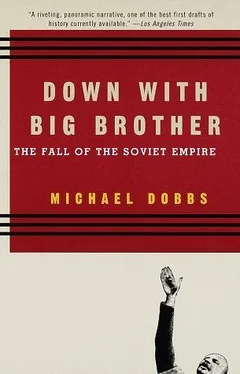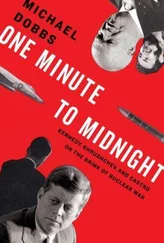Borowczyk and his friends felt reasonably confident they could persuade their workmates to join a protest action. Tens of thousands of Polish workers had already staged strikes over the government’s attempts to raise meat prices at at the beginning of July. On each occasion, the workers had called off their protest after being promised large pay increases by the government. Such victories meant little at a time of high inflation. Within a few months the workers were as bad off as before. It was essential that the Gdańsk strike be organized properly.
In order to sustain their protest and ensure that the whole shipyard came out on strike, the young radicals knew that they needed someone experienced. Wałęsa was an ideal choice. He enjoyed considerable authority in the shipyard as one of the leaders of the failed 1970 uprising. He was also well known in Gdańsk as a prominent member of the underground Baltic free trade union movement. There were other opposition figures in the city, who were better read and had greater strategic vision. But Wałęsa had a special talent: making a nuisance of himself in public. He would seize any opportunity to denounce the Communist regime. He would hop on a tram or bus and immediately start distributing antigovernment leaflets. When he took a taxi, he would try to convert the driver to the cause of free trade unions. Exasperated by his behavior, the shipyard management had fired him for insolence in 1976. The authorities frequently locked him up in prison for forty-eight hours at a time. But all attempts to control the feisty little electrician were useless. Wałęsa would even argue with his jailers.
In early August the management of the Gdańsk shipyard handed the free trade union the perfect excuse for a strike. It fired an elderly crane operator named Anna Walentynowicz five months before she was due for retirement. The dismissal letter accused Walentynowicz of “severe violations” of labor discipline. Her real crime was her persistence in distributing Coastal Worker , the free trade-union newsletter. The union decided to retaliate.
If there was a guiding mind behind the initial organization of the strike, it was Bogdan Borusewicz, the thirty-year-old chief editor of Coastal Worker . A graduate of the Catholic University of Lublin, Borusewicz had a long history of conflict with the authorities. During the student unrest of 1968 he had been sentenced to three years in prison for handing out illegal leaflets in Gdańsk. He was in close contact with intellectual and dissident circles in Warsaw. It was Borusewicz who recruited the three young men from the shipyard—Borowczyk, Pradzynski, and Felski—to bring their fellow workers out on strike. Accustomed to the ways of conspiracy, he insisted on the need for strict secrecy. Even Wałęsa was given less than twenty-four hours’ notice of the final date of the strike. 69
On the morning of August 14 the three young workers fanned out across the sprawling shipyard. Each was armed with a dozen posters and five hundred or so leaflets, printed on the illegal presses of Coastal Worker . Borowczyk headed for his department, K-5, on the other side of a canal that runs through the middle of the shipyard. Rusting away in a corner of the department were piles of imported steel-welding equipment, costing millions of dollars, which nobody had learned how to put to use properly. 70
The workers crowded around Borowczyk as he began distributing leaflets in the locker room. Signed by the editorial board of Coastal Worker , the leaflets called for the reinstatement of Anna Walentynowicz. “The authorities frequently resort to isolating those who show leadership potential,” the leaflets declared. “If today we fail to make our opposition felt, there will be no one to contest the increase in working hours, the violations of security rules, or the compulsory overtime. The best way of defending our own interests is to defend one another.” 71In order to broaden the appeal of the strike, Borowczyk added a second demand, a thousand-zloty pay rise.
His colleagues were sympathetic but frightened. “Why doesn’t a larger department begin the strike?” asked one worker. “We’re not standing here any longer, let’s go back to the hall,” said another, glancing around nervously. Borowczyk knew that if the workers went back to the hall, under the gaze of the foreman and the Communist Party secretary, all would be lost. He had no idea if other departments had joined the strike, but he decided to take a risk.
“Let’s go to K-three and K-four,” he said, referring to two giant hull-making departments. “They’ve both stopped.” 72
A group of about thirty workers agreed to follow him. Beneath a makeshift banner announcing their two demands, they marched back across the drawbridge to the main section of the yard. Everywhere knots of curious workers formed to watch them pass, a lonely band of determined men dwarfed by the towering cranes and red propaganda posters hailing the glorious Communist future. “Come with us,” they chanted. Khodz z namy . It was the same cry that had reverberated around the shipyard a decade before. In little groups of three and four, workers clambered down from the half-finished ships to join the swelling procession. Someone switched on the shipyard warning sirens, the agreed signal for the beginning of the strike.
Wearing their blue-gray overalls and yellow hard hats, the workers skirted the back of the electricians’ hall, W-4, where Wałęsa had worked four years previously. They headed for the K-3 department at the far end of the shipyard, near gate number three. A crowd of several hundred workers had gathered outside K-3, reading the posters hung up by Ludwik Pradzynski. The effect of the two groups coming together was electric. “Hurrah, hurrah,” they cheered. Suddenly they no longer felt alone.
By now they were several thousand strong. Growing more confident, they marched very slowly around the entire shipyard once again, attracting supporters as they went. They ended up at gate number two, where the tragedy of December 1970 had occurred. But this time, instead of surging out onto the streets, they halted. A minute’s silence was declared in memory of the fallen. Then, their throats sore with emotion, they sang the national anthem, “ Jeszcze Polska nie zginęła, Póki my żyjemy ” “Poland has not perished yet / So long as we live.”
LECH WAŁĘSA HEARD THE WAILING of the shipyard sirens at home in Stogi, a drab working-class suburb of crumbling prefabricated apartment blocks on the eastern outskirts of Gdańsk. He knew exactly what it meant. The shipyard named for the founder of the world’s first socialist state was on strike.
Family problems had prevented him from getting away any sooner. His trade union activities had caused him to miss the birth of his daughter Ania a few days before. Police had knocked on the door of their two-room apartment with an arrest warrant just as his wife, Danuta, was about to go into labor. Detaining opposition activists for forty-eight-hour stints, without bringing formal charges, was a standard form of official harassment. By the time he was released, baby Ania had already been born. The trauma of the birth, in a crowded, unsanitary hospital, had left Danuta exhausted and barely able to stand. She insisted that Lech get the older kids dressed and take them to school before rushing off to change the world.
As he rode the tramway to the shipyard, dressed in his most respectable clothes, a shabby gray suit that looked as if it needed a good dry cleaning, Wałęsa wondered why he had not been arrested again. He could see a Polish Fiat trailing the tram: the secret police were keeping a close eye on him. The authorities were expecting trouble in Gdańsk. A few days previously the party’s top ideologist had boasted that the police knew the names and addresses of twelve thousand opposition activists in Poland. Rounding up potential troublemakers in a city like Gdańsk was a relatively simple affair. A dark thought flashed across Wałęsa’s mind: Perhaps they actually want us to go on strike, so they can gun us all down once again . 73
Читать дальше












